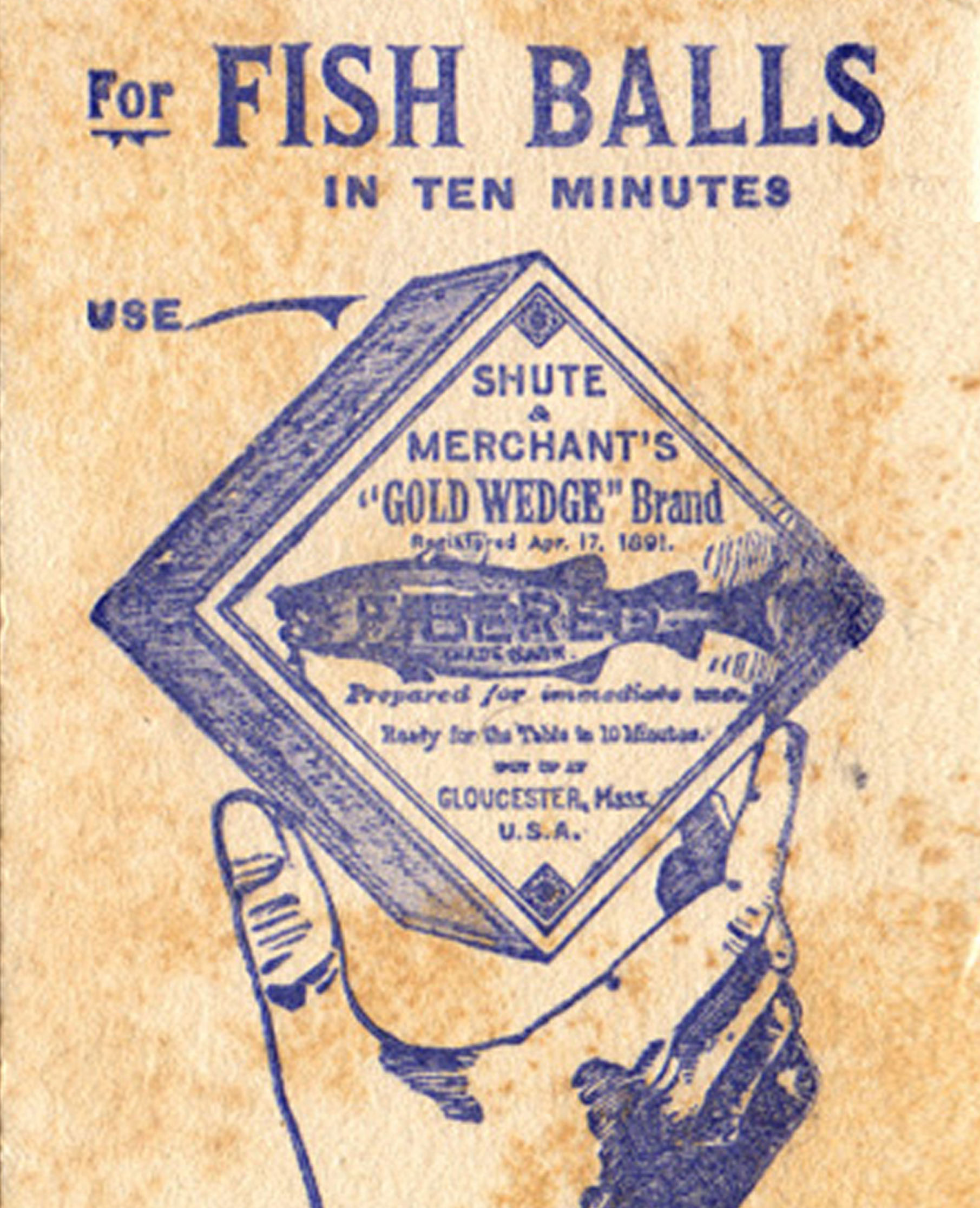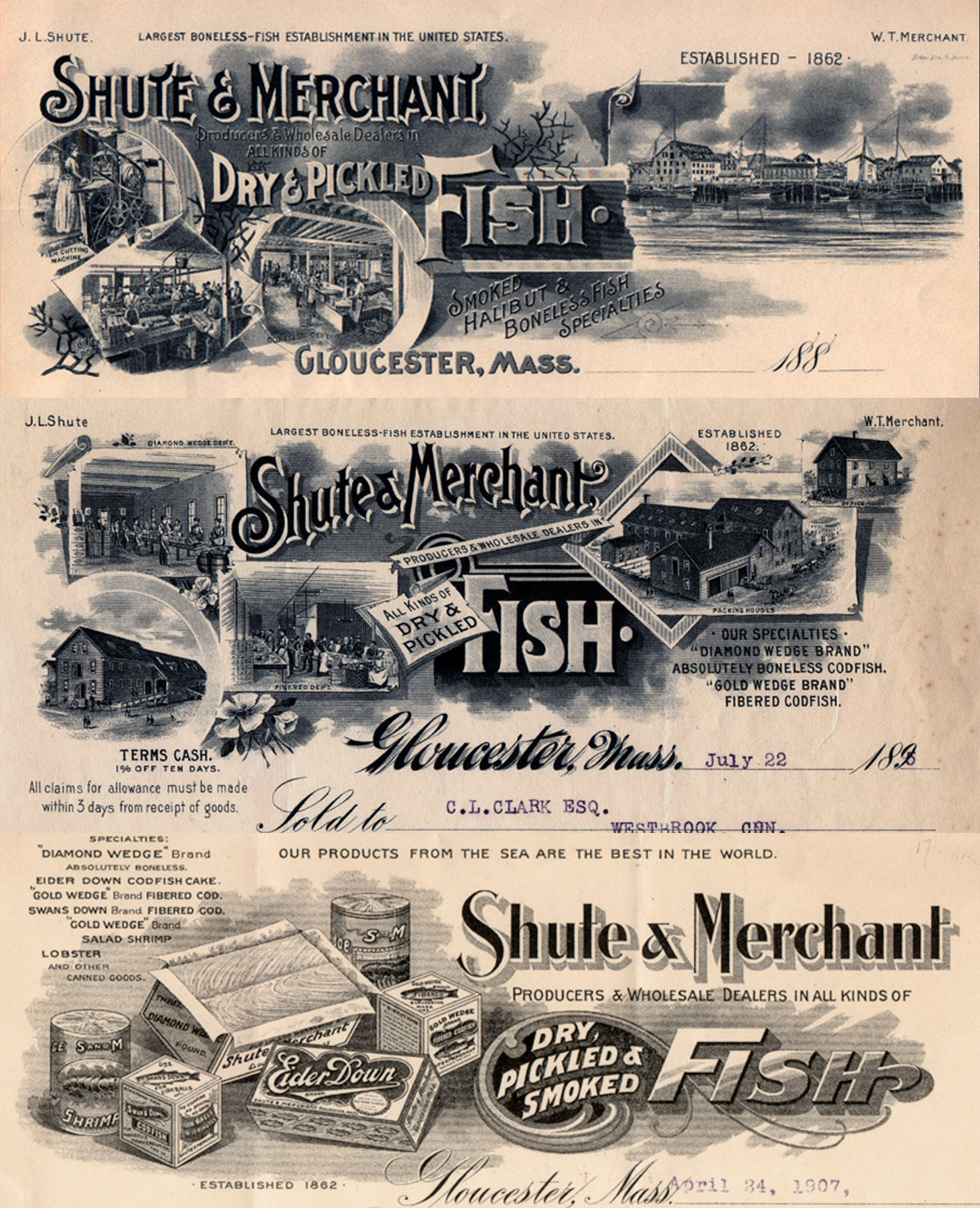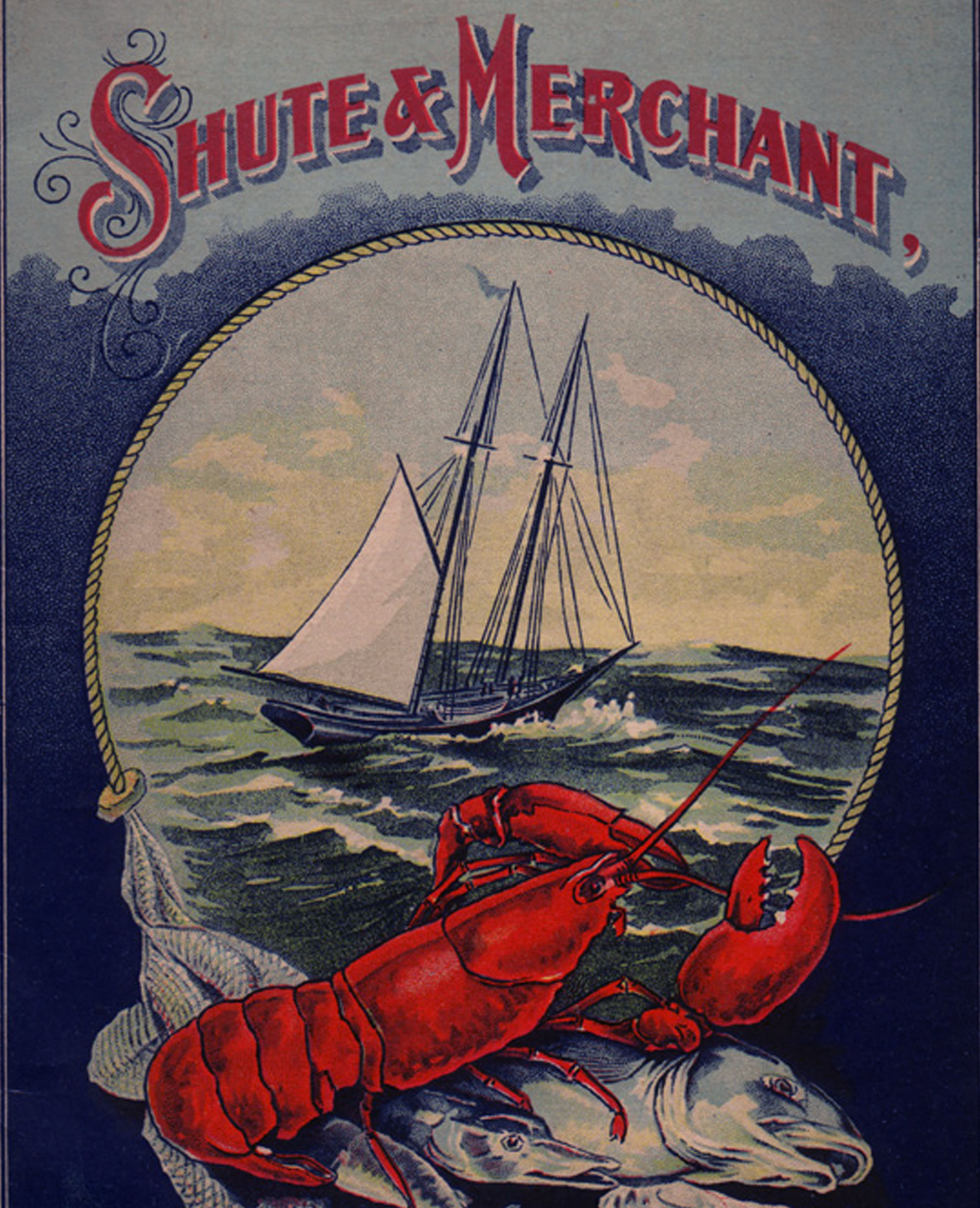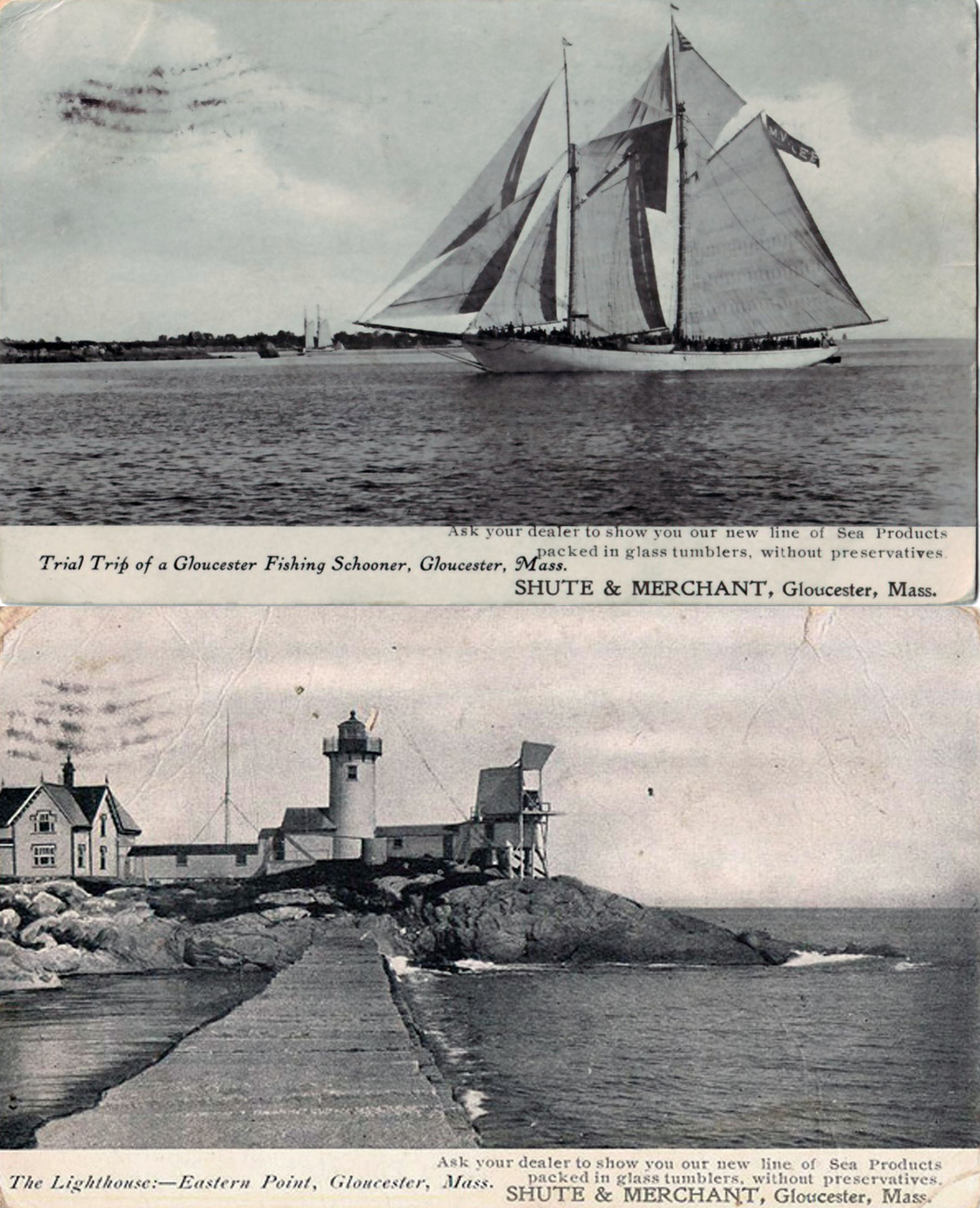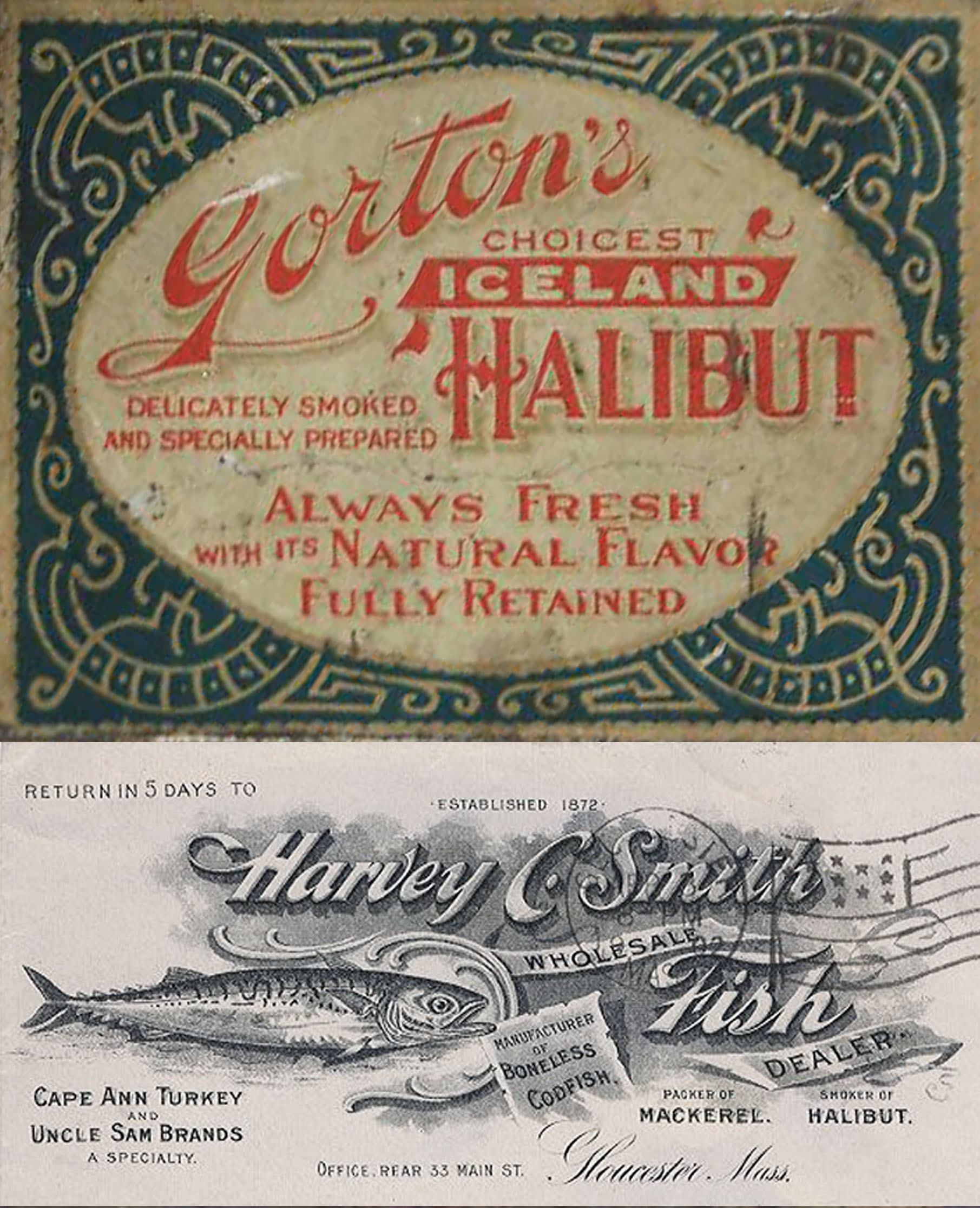Shute & Merchant
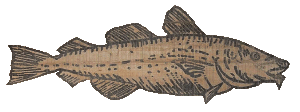
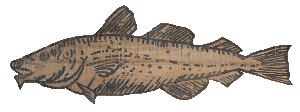
advertising
Advertising was as vital to the success of a company in the late 1800's and early 1900's as it is today. Shute & Merchant used a variety of different advertising items to help market their fish products, as did the other companies located in Gloucester.
Throughout its time in operation, Shute & Merchant advertised their products in various fashions, including trade cards, magazine ads, postcards and cookbooks. Trade cards and product inserts were an easy way to introduce or pass along product information. Some of the colorful images were also used by other firms in Gloucester and other areas. Most of the very colorful images were the newest type of advertising pieces, as color lithography was introduced.
Shute & Merchant had a number of product lines, some of which were: Diamond Wedge, Gold Wedge, Eider Down and Swan's Down.
Billheads and ad covers were another way a firm had a chance to employ beautiful graphics related to their company. The oldest billhead for Shute & Merchant dates back to 1873, and uses fancy text graphics only.
The first full-graphic billhead and ad cover for the firm goes back to the 1880s, but was never used, so the specific year is not known. Most companies at this time, who could afford the costs, used beautifully detailed, engraved art on their billheads and ad covers. Depending on how the images was set up, some ad covers had about three-quarters of the front space filled with image, leaving just enough room for the customer's address.
Most of the images used for the Shute & Merchant billheads and ad covers depicted views of the firm's buildings or part of their product lines ... sometimes both.
(click on the image to learn more)
For a period of time, Shute & Merchant published a cookbook, which contained hundreds of "receipts" for cooking fish. Altogether, their cookbook was published in nine editions, the final four all having a very colorful lithographic cover.
The earliest dated copy of the Shute & Merchant cookbook is held in the Peabody-Essex Museum. That one has a copyright date of 1894, and is also marked as the 5th edition. That edition has a more traditionally printed cover for the times … in black & white, with a few decorative elements.
During the mid to late nineteenth century, many things changed how American women obtained the ingredients they cooked. Changes in technology and transportation, as well as the increase in women's magazines made national advertising a very important aspect of marketing for a business. It was during the 1880's that some manufacturers began using small booklets filled with recipes sent by mail.
There is no information indicating when Shute & Merchant adopted this practice. There is also no information about how many editions of their cookbook were printed per year, and only the one has a date inside.
Many firms used postcards as another way to share information about their products. After the introduction of printed postcards, Shute & Merchant used them as a way of letting a client know when their sales person would be coming for an appointment.
In 1906, Shute & Merchant began an advertising campaign that used photo postcards with scenes from around Gloucester and Cape Ann. Most of these photo images were printed on postcards available for purchase by the general public as well, so they were not just published for use by Shute & Merchant.
It wasn't until 1861 that postcards, once known as "privately printed cards", were permitted by the U.S. Mail, and that is the same year that the first postcard was copyrighted in America. Early postcards could not have any message printed on the address side, and that didn't change until 1907.
Before postcards began using real photographs around 1900, photographic images were printed on postcards using an offset printing technique, which is much less expensive than the real photo process.
(click on the image to learn more)
Our Competitors


advertising
Gloucester's harbor was home to many fish firms, as well a Shute & Merchant. Among the best known is Gorton's, which began as Slade-Gorton. In 1906, that firm, along with that of John Pew (the oldest fish packing establishment in Gloucester), Reed & Gamage and David B. Smith & Company, joined together to form the Gorton-Pew Fisheries Company. One year later, Shute & Merchant merged with Gorton-Pew.
These numerous fish businesses followed similar advertising practices. Some of the most unique and plentiful examples do come from the Gorton fish companies under their various versions. Many of the firms never became as well-known, but the art for their billheads and other items were equally beautiful.
After the merger with Gorton-Pew, at least one or two of the Shute & Merchant brand names continued to be used for what were now Gorton-Pew product lines.
